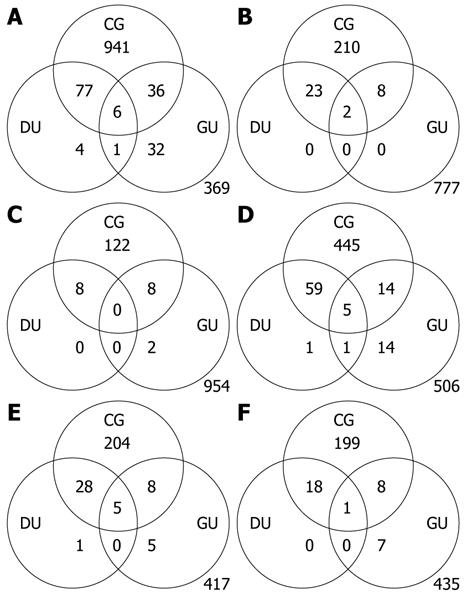Copyright
©2012 Baishideng Publishing Group Co.
World J Gastroenterol. Oct 14, 2012; 18(38): 5404-5411
Published online Oct 14, 2012. doi: 10.3748/wjg.v18.i38.5404
Published online Oct 14, 2012. doi: 10.3748/wjg.v18.i38.5404
Figure 1 Incidence of chronic gastritis, duodenal ulcer and gastric ulcer disease and distribution of the investigated independent variables.
A: Incidence of gastric diseases in patients who underwent endoscopy (n = 1466); B: Distribution of the histopathological parameters of atrophy (n = 1020); C: Intestinal metaplasia (n = 1094); D: Positive histological diagnosis of Helicobacter pylori (H. pylori) (n = 1045); E: H. pylori vacA m1 genotypes (n = 668); F: H. pylori vacA m2 genotypes (n = 668). CG: Chronic gastritis; DU: Duodenal ulcer; GU: Gastric ulcer; vacA: Vacuolating cytotoxin A. Values outside circles are negative tests.
- Citation: Suzuki RB, Cola RF, Cola LTB, Ferrari CG, Ellinger F, Therezo AL, Silva LC, Eterovic A, Sperança MA. Different risk factors influence peptic ulcer disease development in a Brazilian population. World J Gastroenterol 2012; 18(38): 5404-5411
- URL: https://www.wjgnet.com/1007-9327/full/v18/i38/5404.htm
- DOI: https://dx.doi.org/10.3748/wjg.v18.i38.5404









